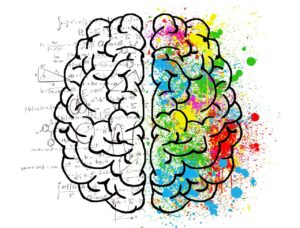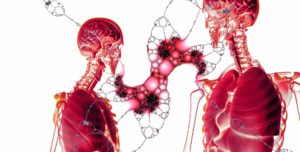During the first few months after her surgery, shopping for groceries was infuriating. Standing in the supermarket aisle, Anastasia would look at an item on the shelf and know that she wanted to place it in her trolley — but she couldn’t. “I’d reach with my right for the thing I wanted, but the left would come in and they would kind of fight,” she says. “Almost like repelling magnets.” Picking out food for the week was a two-hour ordeal and sometimes three-hour. Getting dressed posed a similar challenge also, she couldn’t reconcile what she wanted to put on with what her hands were doing. Sometimes she ended up wearing three outfits simultaneously. “I’d have to dump all the clothes on the bed, catch my breath and start afresh.”
In one crucial way, she was better than her pre-surgery self when she had to battle with epilepsy. She was no longer racked by epileptic seizures that were so severe they had made her life close to unbearable. She once collapsed onto the bar of an old-fashioned oven, burning and scarring her back. “I really just couldn’t function,” she says.
Later, her neurologist informed her about a radical but dangerous surgery that might help, she barely hesitated. If the worst were to happen, she knew that her parents would take care of her young daughter. “But of course I worried,” she says. “When you get your brain split, it doesn’t grow back together.”
Split-brain or callosal syndrome is a type of disconnection syndrome when the corpus callosum connecting the two hemispheres of the brain is severed to some certain extent. The surgical operation (corpus callosotomy) that lead to this condition (Split-Brain) involves transection of the corpus callosum, and is usually a last resort to treat refractory epilepsy (even though some drugs have been lately introduce to cure epilepsy without surgery)
In June 1970, Anastasia went through a rare surgical procedure that lasted up-to 10 hours, doctors created a fightback to contain Anastasia’s seizures/epilepsy by slicing through her corpus callosum-the bundle of neuronal fibres connecting the two sides of her brain. This drastic procedure, called a corpus callosotomy, disconnects the two sides of the neocortex, the home of language, conscious thought and movement control. Anastasia’s supermarket predicament was the consequence of a brain that behaved in some ways as if it were two separate minds.
But what Anastasia could never have known was that her surgery would turn her into an accidental superstar of neuroscience, a person who has two separate brains in one head! She is one of fewer than a dozen ‘split-brain’ patients around the world whose brains and behaviours have been subject to countless hours of experiments, hundreds of scientific papers, and references in just about every psychology and anatomy textbook of the past generation. And as at today their numbers are dwindling.
Afterwards, the right and left brain are separated, each hemisphere will have its own separate perception, concepts, and impulses to act on. Having two “brains” in a single body can create some interesting dilemmas for the person possessing it. When one split-brain patient is about to put on a cloth for instance, he may sometimes pulled his trousers up with one hand (that side of his brain wanted to get dressed) and down with the other (this side did not). However, such conflicts are very rare. If a conflict arises, one hemisphere usually overrides the other.
The two hemispheres of the cerebral cortex are linked by the corpus callosum, through which they communicate and coordinate actions and decisions. However when they are separated, they act alone without having to cooperate to process an impulse. Additionally, communication and coordination between the two hemispheres is essential because each hemisphere has some separate functions.
The right hemisphere controls the primary sensory functions of the left side of the body. In a more cognitive sense the right hemisphere is responsible for recognizing objects and timing, and in an emotional sense it is responsible for empathy, humour and depression. On the other hand, the left hemisphere controls the primary sensory functions of the right side of the body and is responsible for scientific and maths skills, and logic.
However, despite the fact that the two hemisphere loses connection to each other, a patient suffering from this surgery induce ailment can still act like a normal person with a single brain as time goes on after the surgery. The surgery, already quite rare, has been replaced by drug treatments and less drastic surgical procedures. Meanwhile, imaging technologies have become the preferred way to look at brain function, as scientists can simply watch which areas of the brain are active during a task
After about a year after the surgery, Anastasia’s difficulties abated. “I could get things together,” she says. For the most part she was herself: tying are shoes laces, slicing vegetables, playing cards, even swimming.
Writer: Ahmad Abdullah
University of Ilorin, Kwara State, NIGERIA




Intuitive as always, kudos 👏🏿 💯
👊👊
Having split brain is better than having epileptic seizures but living with this condition can be frustrating. I guess she’ll always need people around her to help her make decisions
Great! You really understood what the piece entails